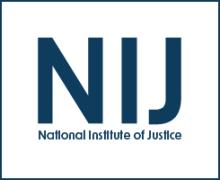Research
Reducing Substance Use Risk and Mental Health Problems Among Sexually Assaulted Adolescents: A Pilot Randomized Controlled Trial
Journal
Date Published
2012
Publication Type
Research (Applied/Empirical)
The Results of a Randomized Controlled Trial of Police Body-Worn Video in Australia
Date Published
2021
Publication Type
Research (Applied/Empirical)
Focused Deterrence and Program Fidelity: Evaluating the Impact of Detroit Ceasefire
Journal
Date Published
2021
Publication Type
Research (Applied/Empirical)
Testing Hot-Spots Police Patrols Against No-Treatment Controls: Temporal and Spatial Deterrence Effects in the London Underground Experiment
Date Published
2020
Publication Type
Research (Applied/Empirical)
Do Police Body-Worn Cameras Reduce Citizen Fatalities? Results of a Country-Wide Natural Experiment
Date Published
2022
Publication Type
Research (Applied/Empirical)
Effectiveness and Cost-Effectiveness of Universal School-Based Mindfulness Training Compared with Normal School Provision in Reducing Risk of Mental Health Problems and Promoting Well-Being In Adolescence: The MYRIAD Cluster Randomized Controlled Trial
Journal
Date Published
August 2022
Publication Type
Research (Applied/Empirical)
Warning Messages to Prevent Illegal Sharing of Sexual Images: Results of a Randomized Controlled Experiment
Date Published
2022
Publication Type
Research (Applied/Empirical)
The Effects of Intensive Post-Release Correctional Supervision on Recidivism: A Natural Experiment
Journal
Date Published
2021
Publication Type
Research (Applied/Empirical)
Estimating the Impact of an Integrated CCTV Program on Crime
Date Published
2021
Publication Type
Research (Applied/Empirical)
Improving Health Care Through Housing First
Date Published
2021
Publication Type
Research (Applied/Empirical)
Reentry services: An evaluation of a pilot project in Clay County, MN
Date Published
2007
Publication Type
Research (Applied/Empirical)
A LANDSCAPE REPORT ON MEASURING COMMUNITY SENTIMENT AND PERCEPTIONS OF SAFETY AND LAW ENFORCEMENT PERFORMANCE
Date Published
June 2023
Agencies
NIJ-Sponsored
Publication Type
Research (Applied/Empirical)
Survivability versus rate of recovery for skeletal elements in forensic anthropology
Journal
Date Published
2022
Agencies
NIJ-Sponsored
Publication Type
Research (Applied/Empirical)
A Conceptual Model of Help-Seeking by Black Americans After Violent Injury: Implications for Reducing Inequities in Access to Care
Journal
Date Published
August 2022
Agencies
NIJ-Sponsored,
OVC-Sponsored
Publication Type
Research (Applied/Empirical)
The Relationship Context of Early Transitions to Parenthood: The Influence of Arrest
Date Published
July 2020
Agencies
NIJ-Sponsored
Publication Type
Research (Applied/Empirical)
Linking Parental Incarceration and Family Dynamics Associated with Intergenerational Transmission: A Life Course Perspective
Date Published
2019
Agencies
NIJ-Sponsored
Publication Type
Research (Applied/Empirical)
Health Starting Points: Continuity and Change in Physical and Mental Health Before and During the COVID-19 Pandemic
Date Published
2021
Agencies
NIJ-Sponsored
Publication Type
Research (Applied/Empirical)
Changes in Stress Levels during the COVID-19 Pandemic: The Role of Involvement in Criminal Behavior
Journal
Date Published
2023
Agencies
NIJ-Sponsored
Publication Type
Research (Applied/Empirical)
Enhancing Vocational Training in Corrections: A Type 1 Hybrid Randomized Controlled Trial Protocol for Evaluating Virtual Reality Job Interview Training Among Returning Citizens Preparing for Community Re-entry
Date Published
September 2020
Agencies
NIJ-Sponsored
Publication Type
Research (Applied/Empirical)
Exploring the Guardian Mindset as a Strategy for Improving Police-Community Relations
Date Published
2023
Agencies
NIJ-Sponsored
Publication Type
Research (Applied/Empirical)
Strengthening the Foundation: A Look at Past, Present, and Future Research for Adult Drug Courts
Date Published
April 2023
Agencies
BJA-Sponsored
Publication Type
Program/Project Description





